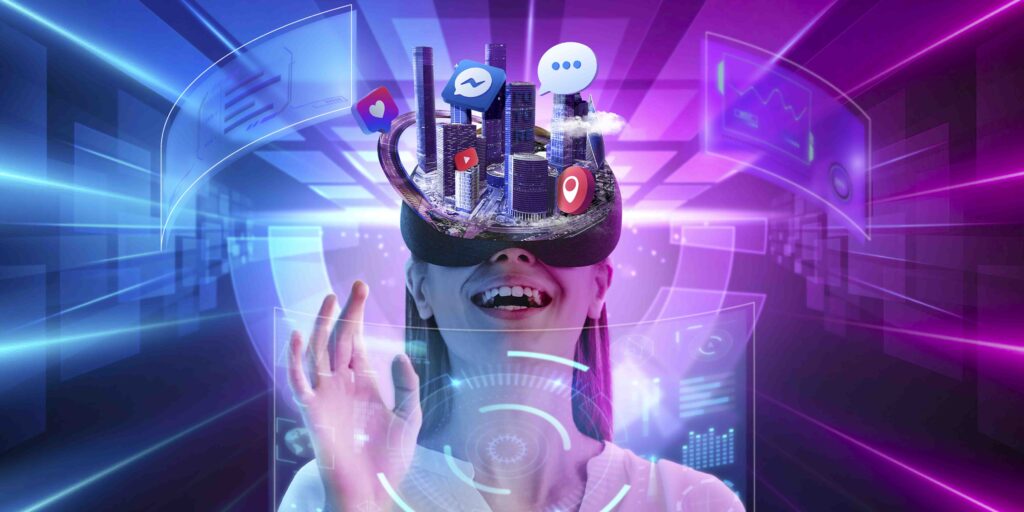Live streaming has developed into an essential component of our life in this era of digital technology. The ability to communicate with people all around the world in real time has a wide range of applications, ranging from entertainment and gaming to educational and business conferences. However, the introduction of virtual reality live streaming services has elevated this experience to a degree that has not been seen before. These services, which are driven by cutting-edge technology, are revolutionising the way in which we interact with material by providing experiences that are both immersive and interactive. These encounters blur the barrier between reality and virtuality.
The Emergence of Unreal Live Streaming

Unreal live streaming is the next evolutionary step in the world of live broadcasting. Combining real-time rendering with advanced virtual reality (VR) and augmented reality (AR) technologies, this innovative approach enables users to experience live events in a highly realistic and interactive manner. Whether it’s a live concert, a sports event, or even a virtual tourism experience, unreal live streaming transcends traditional boundaries to transport users into virtual realms.
Realism at its Finest
One of the key aspects that sets real-time live streaming services apart is their ability to create visually stunning and highly realistic environments. Powered by powerful graphics engines and sophisticated rendering techniques, these services can replicate real-world settings with astonishing detail and fidelity. From lifelike avatars to intricately designed virtual landscapes, the level of realism achieved by unreal live streaming is truly awe-inspiring.
Interactivity Takes Centre Stage
Unreal live streaming doesn’t just offer passive viewing experiences; it allows users to actively participate and engage with the content. Whether it’s through interactive chat features, real-time audience polling, or even controlling aspects of the virtual environment, viewers can become active participants in the live stream. This level of interactivity adds a new layer of excitement and immersion, making the experience more personal and engaging.
Immersive Virtual Reality Experiences

Unreal Live streaming leverages VR technology to provide users with truly immersive experiences. By wearing a VR headset, viewers can step into a virtual world and enjoy a front-row seat to live events from the comfort of their homes. From attending live concerts and sports matches to exploring distant locations, the possibilities are endless. Unreal live streaming brings people together in shared virtual spaces, transcending geographical limitations and fostering a sense of community.
Augmented Reality Enhancements
Unreal live streaming also integrates augmented reality elements, enhancing the real-world environment with digital overlays. By leveraging mobile devices or dedicated AR glasses, users can experience a blend of virtual and physical elements seamlessly. Imagine watching a football game on TV while seeing player stats and instant replays superimposed onto your screen. Unreal live streaming makes this possible, adding depth and context to live events.
The Future of Unreal Live Streaming
The potential of unreal live streaming services is vast, and we are only scratching the surface of what’s to come. As technology continues to evolve, we can expect even more mind-boggling advancements in this field. Here are a few possibilities for the future:
- Haptic Feedback: Imagine being able to feel the vibrations and impact of a live music concert or sporting event through haptic feedback devices. Unreal live streaming could integrate such technologies to provide a multi-sensory experience that engages not just our sight and sound but also our sense of touch.
- Personalised Experiences: With the help of artificial intelligence and machine learning, unreal live streaming services could learn from users’ preferences and tailor the content and virtual environments to their liking. Each viewer could have a customised experience, ensuring maximum enjoyment and relevance.
- Cross-Reality Collaboration: Unreal live streaming could bridge the gap between virtual and physical realms, enabling real-time collaboration between users in both worlds. Whether it’s a business meeting, a virtual classroom, or a creative brainstorming session, this technology could redefine how we interact and collaborate remotely.
Live broadcasting has entered a new era of possibility with the advent of live streaming services. These services provide users with immersive, interactive, and hyper realistic experiences by combining real-time rendering, virtual reality, and augmented reality. The prospective applications of real-time live streaming are vast, ranging from entertainment and gaming to education and beyond. As technology continues to advance, we can anticipate a future in which the line between reality and virtuality will continue to merge, transforming how we experience live events.
#UnrealLiveStreaming, #VirtualReality, #AugmentedReality, #ImmersiveExperience, #FutureTech, #InteractiveContent

